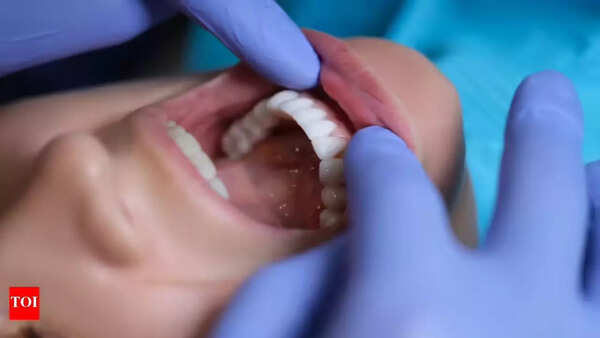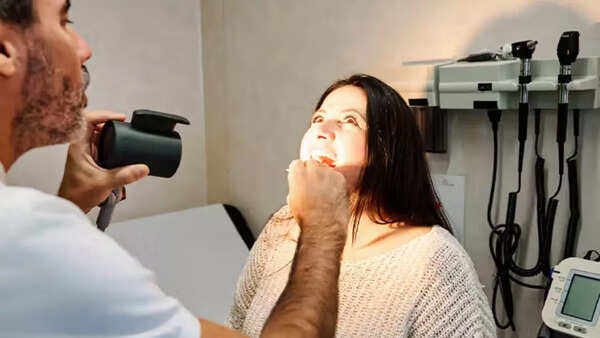Oral cancer, a serious condition affecting the tissues of the mouth, including the lips, tongue, gums, inner cheeks, and the roof or floor of the mouth, demands attention. Also known as mouth cancer, it can sometimes involve the oropharynx, the area at the back of the throat. Often beginning as a painless sore or patch, it can easily go unnoticed in its early stages. Regular dental checkups and self-examinations are crucial for early diagnosis. While it can affect anyone, certain lifestyle factors like tobacco and alcohol use significantly increase the risk.
Early detection and prompt treatment are key to improving outcomes and survival rates. Let's delve into the signs, symptoms, and prevention strategies for oral cancer.
Oral cancer, a type of head and neck cancer, develops in the tissues of the oral cavity, including the lips, tongue, cheeks, gums, floor and roof of the mouth, and sometimes the oropharynx. It often manifests as a persistent sore, patch, or lump that doesn't heal and can be mistaken for a less serious issue initially.
If left untreated, oral cancer can spread to nearby structures, including lymph nodes and other parts of the head and neck, and in advanced cases, to distant organs. Despite its potential severity, oral cancer is highly treatable when diagnosed early.
While oral cancer typically affects individuals aged 60 and older, it can also develop in younger people. Men are statistically twice as likely to develop it compared to women. Among different racial groups, white men have a higher incidence rate than Black men. Approximately 11 in 100,000 individuals are diagnosed with oral cancer in their lifetime.
This cancer is particularly concerning because many of its early symptoms are painless and subtle, leading to delayed diagnosis and treatment in many cases.

Oral cancer often presents as persistent changes in the mouth that do not go away. These can include:
Visible Signs:
Sensory and Functional Symptoms:
These symptoms may mimic other conditions like infections or ulcers, but their persistence should raise concern.

Performing a monthly self-exam can help identify unusual changes early:
If anything unusual is found, consult a healthcare professional immediately.

Oral cancer can significantly impair a person’s ability to speak, chew, swallow, and even breathe, depending on the location and extent of the tumor. When it affects the oropharynx, it may lead to oropharyngeal cancer, impacting the base of the tongue, soft palate, tonsils, and the back of the throat.
The oral cavity, where oral cancer typically starts, includes:
Oral cancer begins in squamous cells, which are thin, flat cells that line the inside of the mouth. When these cells undergo mutations—usually due to prolonged exposure to carcinogens—they start to multiply uncontrollably and form tumors.
Major risk factors include:
According to Healthline reports, about 25% of oral cancer cases occur in individuals without any of the above risk factors, which underscores the importance of regular oral screenings.
Diagnosis typically begins during routine dental or medical exams. Dentists often play a key role in early detection.
Diagnostic methods include visual and physical exam, brush biopsy, incisional biopsy, laryngoscopy or pharyngoscopy. Once a lesion is confirmed as cancerous, additional tests are done to determine staging, which influences treatment options.
Oral cancer is staged using the TNM system:
Staging helps doctors decide the most effective treatment and estimate the patient’s prognosis.
While not all cases can be prevented, the risk can be significantly reduced through:
Life after oral cancer treatment varies. Some patients experience minor changes, while others face long-term impacts on speaking, chewing, and appearance. Support from reconstructive surgery, physical therapy, speech therapy, and mental health counseling may be needed. Ongoing check-ups are essential, as recurrence or secondary cancers are possible.
Newer articles
Older articles
 Greg Chappell: Rishabh Pant is Redefining Cricket with His Fearless Batting
Greg Chappell: Rishabh Pant is Redefining Cricket with His Fearless Batting
 India's Harshit Rana Released from Squad Ahead of Second Test Against England
India's Harshit Rana Released from Squad Ahead of Second Test Against England
 What Your Phone Grip Says About You: A Personality Quiz
What Your Phone Grip Says About You: A Personality Quiz
 Nitish Rana Eyes Delhi Comeback After Disappointing Uttar Pradesh Stint
OR
Former Delhi Captain Nitish Rana Returns to Home State After Uneventful UP Tenure
OR
Struggling Nitish Rana Seeks Revival with Delhi Return After Underwhelming UP Season
Nitish Rana Eyes Delhi Comeback After Disappointing Uttar Pradesh Stint
OR
Former Delhi Captain Nitish Rana Returns to Home State After Uneventful UP Tenure
OR
Struggling Nitish Rana Seeks Revival with Delhi Return After Underwhelming UP Season
 Wimbledon 2025: Streaming Guide for India & US Viewers - Dates, Prize Money & New Tech
Wimbledon 2025: Streaming Guide for India & US Viewers - Dates, Prize Money & New Tech
 Smith Set for Second Test Comeback After Unique Baseball Cage Recovery
Smith Set for Second Test Comeback After Unique Baseball Cage Recovery
 Spotting Prediabetes: Key Warning Signs Your Body May Be Sending
Spotting Prediabetes: Key Warning Signs Your Body May Be Sending
 India's Fielding Woes Blasted by Former Selector After Test Loss to England: 'Simple Catches Cost Us'
India's Fielding Woes Blasted by Former Selector After Test Loss to England: 'Simple Catches Cost Us'
 Tiêu đề:
Oral Cancer: Know the Signs, Risk Factors, and Why Early Detection is Critical
Tiêu đề:
Oral Cancer: Know the Signs, Risk Factors, and Why Early Detection is Critical
 Mirabai Chanu: Olympic Medalist Reveals Relentless Focus on Training and Weight, Even During Downtime
Mirabai Chanu: Olympic Medalist Reveals Relentless Focus on Training and Weight, Even During Downtime